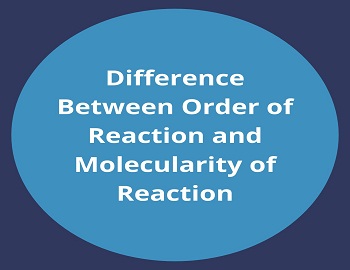Table of Contents
Heisenberg Uncertainty Principle:
Due to the dual nature of matter and radiation, it is impossible in case of small particles such as electrons to determine simultaneously both position and velocity (or momentum) with absolute accuracy. This fact was first noted by Werner Heisenberg’s in 1927 and he proposed a principle known as Heisenberg’s Uncertainty Principle which states that “it is impossible to measure at any given moment both the position and momentum (or velocity) of small particles in motion with the desired accuracy” i..e. there is always uncertainty in the simultaneous determination of both position and momentum.
Explanation of Heisenberg Uncertainty Principle:
For the proper location of a small particle like an electron, light radiation of high energy is required which is of very small wavelength (1Å or less). Since light too has dual nature. Consider particle nature of light, to see an electron there must be at least one collision of a photon with the electron. According to de Broglie equation, λ = h/P or P = h/λ. Thus, a small value of ‘λ’ makes the momentum of the photon large and an unknown part of it is transformed to the electron at the time of collision which changes the velocity of an electron by an unknown amount. Thus, we cannot determine its velocity accurately although its position has been measured accurately. This disturbance can be minimized by choosing photons with a small value of P, but now ‘λ’ will be large (less energetic light) leading to uncertainty in the determination of position (as an electron is too small to reflect the light of longer wavelength). From this, Heisenberg concluded that the exactness of one (say position) brings about uncertainty in the other (i.e. momentum) and vice-versa.
Mathematically,
Δx X Δp ≥ h/4π, where ‘Δx’ and ‘Δp’ represents uncertainty in position and momentum of an object respectively. This relation shows that, at any given instant, the more accurately it is possible to measure the momentum of an electron, the more uncertain the exact position becomes i.e., if Δx is made small, Δp increases and vice versa.
Significance of Heisenberg Uncertainty Principle:
This principle applies only for the motion of sub-atomic particles and its effect for the motion of macroscopic objects which can be seen with naked eye is negligible. Example- let us consider the case of cricket ball of mass 500 gms which is of larger size and an electron which is of smaller size.
(i) For cricket ball-
Δx X Δp = h/4π
Δx X mΔv = h/4π
Δx X Δv = h/4πm = 6.624 X 10-34 Kg m2 sec-1 / 4 X 3.142 X 0.5 kg = 1.05 X 10-34 m2 sec-1
This value is very small and can be neglected indicating thereby that Heisenberg uncertainty principle is not applicable to macroscopic objects.
(ii) For electron-
Δx X Δv = h/4πm = 6.624 X 10-34 Kg m2 sec-1 / 4 X 3.142 X 9.108 X 10-31 kg = 0.058 X 10-3 m2 sec-1
This value being large can not be neglected showing that the Heisenberg uncertainty principle is applicable to sub-atomic particles.









Comments (No)